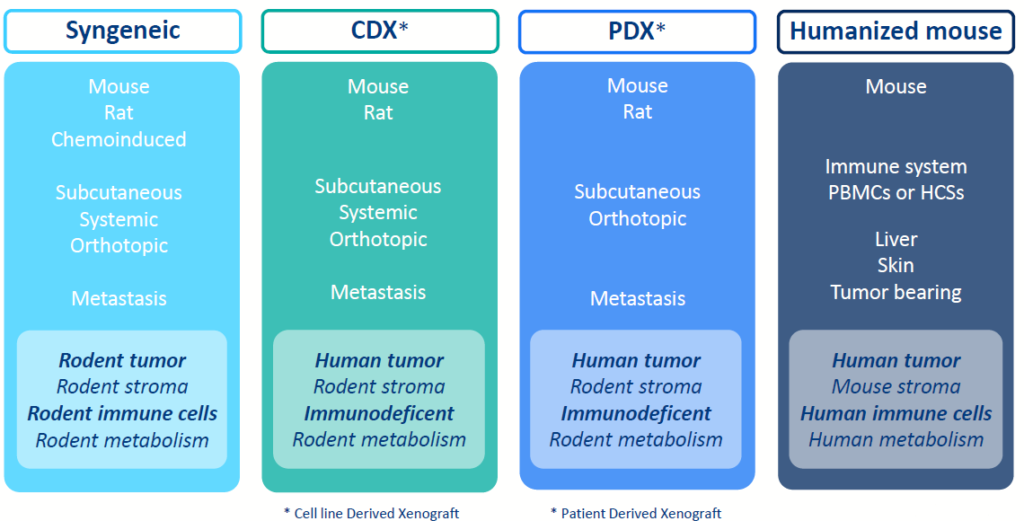
Cancer research is a truly multi-disciplinary initiative involving experts from across the entire gamut of medical sciences. Biologists, epidemiologists, geneticists, and so on are united in their efforts to improve the diagnosis, prevention, and treatment of cancers while deepening our understanding of the complex processes involved in tumor development, progression, and metastasis. Naturally, there are countless approaches to overcoming oncological challenges. There is also a growing toolset available to researchers hoping to improve cancer care and treatment. Oncology models are one such tool.
Oncology models are used to study human cancers in mice, enabling researchers to explore novel cancer markers and targeted therapies. The value of cancer models lies in their ability to reflect the actual biology of human tumors – to an extent. A cancer model may be an artificially induced or naturally occurring system that shares features with human malignancies. This allows researchers to study a raft of critical features such as cancer etiology, molecular basis, host tumor interaction, the tumor microenvironment (TIME), and heterogeneity in metastasis. Clearly, oncology models play a central role in modern cancer research, and this article will delve deeper into the importance of tumor models in oncology, particularly in drug discovery programs.
Immuno-Oncology: Harnessing the Power of the Immune System
In recent years, immuno-oncology has emerged as a promising approach to cancer treatment. Oncology models have been instrumental in this field, as they facilitate the development of therapies that leverage the immune system’s ability to recognize and destroy cancer cells. Orthotopic models, where tumor cells are implanted at the original tumor site, are particularly useful in immuno-oncology research as they closely mimic the natural tumor microenvironment.
Metastatic Models: Addressing the Challenge of Cancer Spread
Metastatic models are crucial for understanding the mechanisms underlying cancer spread, which remains a significant challenge in cancer treatment. We employ metastatic models that allow researchers to study the processes involved in tumor cell dissemination and colonization of distant organs. These models aid in the development of therapies that target metastatic processes, ultimately improving patient outcomes.
Humanized Models: Bridging the Gap Between Preclinical and Clinical Studies
Humanized models, which involve the engraftment of human immune cells into immunodeficient mice, provide a valuable platform for studying the complex interactions between human tumor cells and the immune system. These models bridge the gap between preclinical and clinical studies, offering a more accurate representation of the human tumor microenvironment. Oncodesign Services offers a range of humanized models, allowing researchers to evaluate the efficacy of novel immunotherapies in a clinically relevant context.
Looking for Information on Oncology Models?
At Oncodesign Services, we understand the vital role that oncology models play in advancing cancer research and improving treatment options. Our team offers a full spectrum of services in medicinal chemistry, DMPK, pharmaco-imaging, bioanalysis, in vitro/in vivo pharmacology including humanized models.
With our longstanding experience in the field, we serve all therapy types and are committed to providing cutting-edge solutions to meet the needs of the scientific community.
We have established over 500 tumor models in-house, spanning 20 organ origins and up to 35 pathologies. These include syngeneic, cell-derived xenograft (CDX), and patient-derived xenograft (PDX) tumors, and all are integral to the study of cancer.
If you are looking for more information on oncology models and how they can benefit your research, please do not hesitate to contact us. Together, we can collaborate to advance cancer research and develop novel therapies that will ultimately improve the lives of countless patients.

